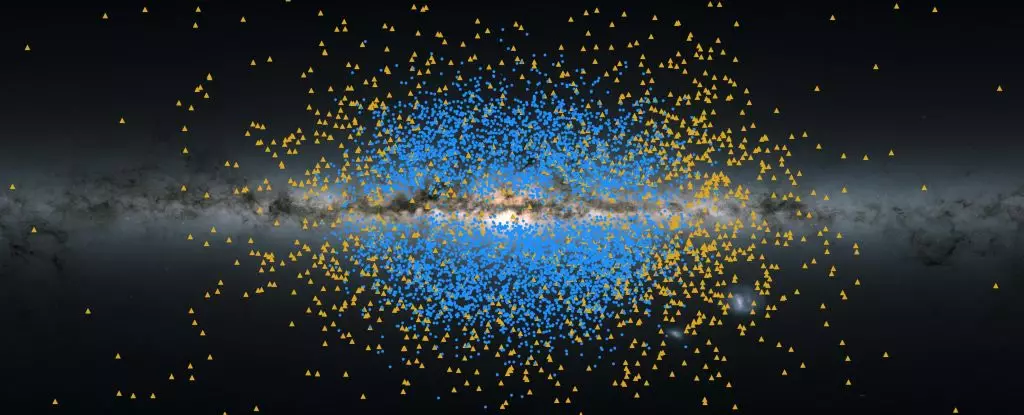

The recent discovery of two ancient streams of stars, aptly named Shiva and Shakti, towards the center of the Milky Way has shed new light on the galaxy’s origins. Astrophysicist Khyati Malhan and astronomer Hans Walter-Rix, from the Max Planck Institute for Astronomy in Germany, unearthed these streams using data from the European Space Agency’s Gaia telescope. These streams are believed to be nearly as old as the Universe itself, dating back to a time when the Milky Way was just a nascent galaxy, extending its first tendrils of stars into the cosmos.
Galactic archaeology, the study of the history and formation of galaxies, relies heavily on identifying ancient populations of stars. The Gaia telescope has played a crucial role in this field by providing high-precision data on the 3D positions, velocities, proper motions, and metallicities of stars in the Milky Way. The metallicity of a star, indicating the presence of metallic elements in its composition, can give astronomers valuable insights into the star’s age. By analyzing this data in conjunction with Gaia’s observations, scientists can uncover hidden groups of stars that share common characteristics, such as age and movement patterns.
Malhan and Walter-Rix’s analysis of the Gaia data led to the identification of Shiva and Shakti, two distinct streams of stars with similar ages of around 12 to 13 billion years. These streams, orbiting in sync with the Milky Way’s rotation, have provided clues about the galaxy’s early formation. Shiva, located closer to the galactic center, exhibits more elliptical orbits, while Shakti, slightly farther out, follows more circular paths. The researchers believe that these streams were once separate structures that merged with the evolving Milky Way, contributing to its growth.
The discovery of Shiva and Shakti underscores the importance of studying the Milky Way’s origins. By examining the subtle differences between stars within the galaxy, scientists can piece together the story of how the Milky Way formed and evolved over billions of years. Gaia’s unprecedented precision in data collection has enabled researchers to delve deeper into the galaxy’s past, providing valuable information about its early stages of development.
The detection of ancient streams like Shiva and Shakti within the Milky Way offers a glimpse into the galaxy’s distant past. These streams, comprised of some of the oldest stars in the universe, provide crucial insights into how our galaxy formed and grew over billions of years. With continued advancements in technology and data analysis, we can expect to uncover even more secrets hidden within the cosmic tapestry of the Milky Way.
The world of medical therapeutics is on the brink of transformation thanks to an innovative…
Recent groundbreaking research published in *Nature* has unveiled a transformative aspect of tree biology that…
In an impressive stride for engineering and computational fluid dynamics, a team of researchers has…
The concept of starquakes—profound vibrations generated by the turbulent surfaces of stars—serves as an innovative…
In a stunning advance that promises to reshape cardiac treatment across the globe, researchers have…
In the battle against climate change, reforestation has emerged as a beacon of hope, particularly…
This website uses cookies.